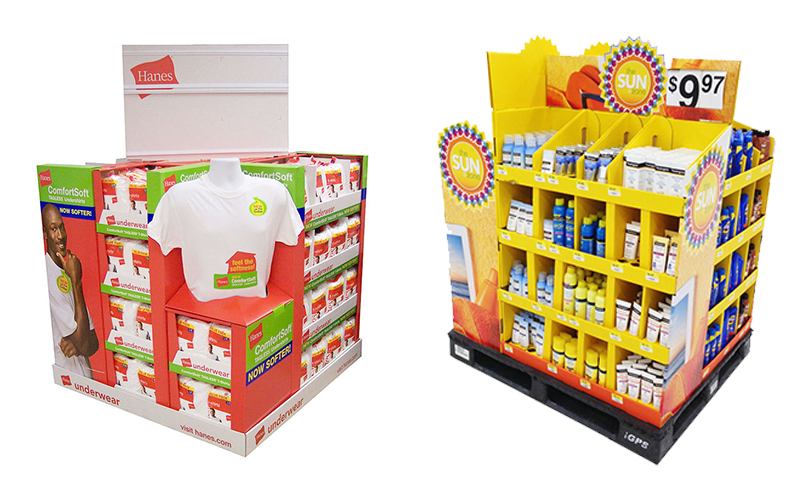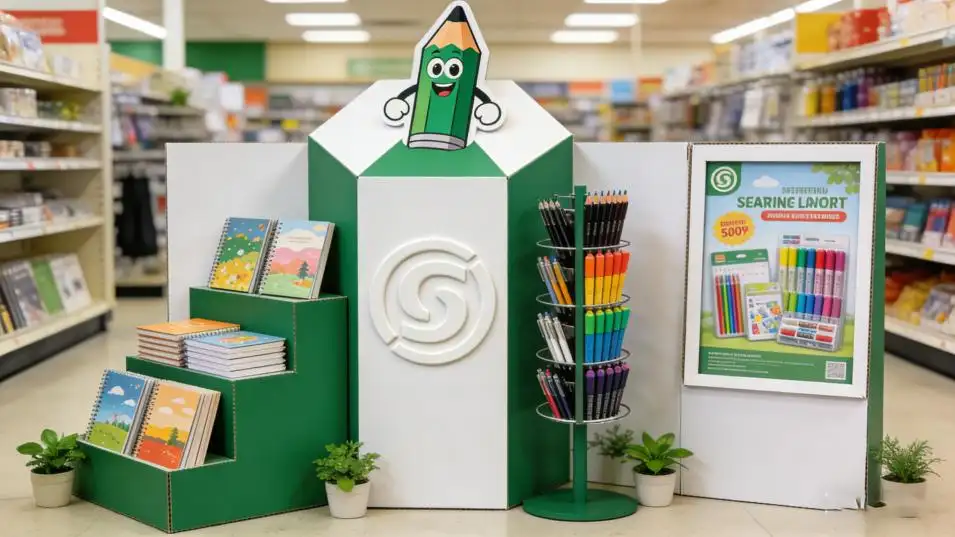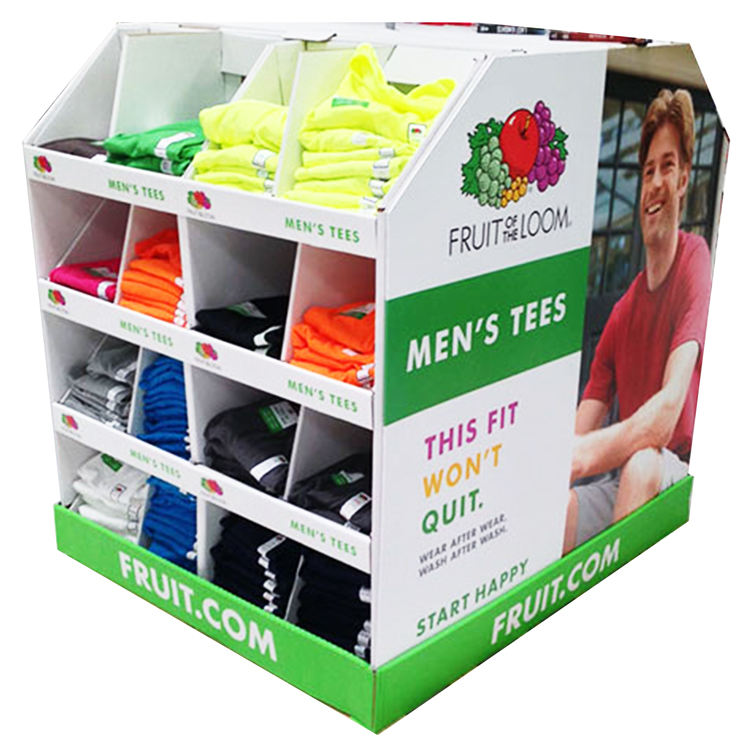Struggling to find the right cardboard display supplier? A bad partnership can cost you time and money. I'll share my 16 years of an insider's view to help you succeed.
To choose the best custom cardboard display supplier, you must look beyond price. Evaluate their industry experience, design capabilities, material quality, and communication. A true partner understands your business goals and works with you to create displays that sell, not just sit there.
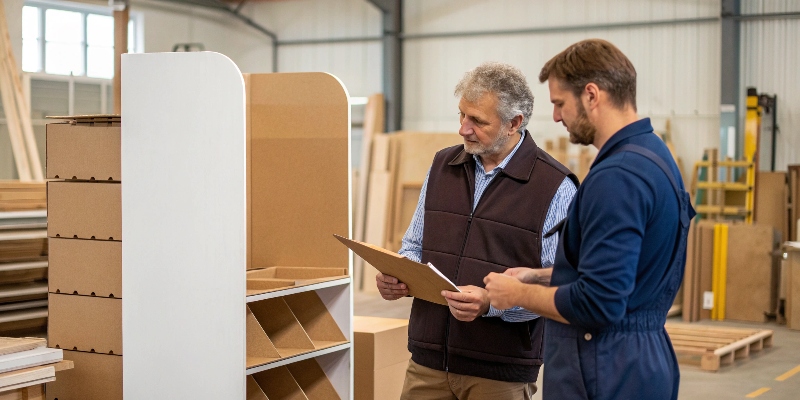
Choosing a supplier is a big decision. It’s about finding a partner who can bring your vision to life and help your products fly off the shelves. A good supplier is an extension of your team, offering advice and solutions that you might not have considered. But with so many options out there, how do you find the one that’s right for you? It's about asking the right questions and knowing what to look for. In this guide, I'll walk you through the key factors to consider, based on my years of helping brands succeed. Let's dive into some of the most common questions I get asked.
What is the price of a cardboard display stand?
Thinking about custom displays but worried about the cost? The price can vary a lot. Let’s break down what actually goes into the final quote you receive from a supplier.
The price of a custom cardboard display stand can range from $15 to over $200 per unit. The final cost depends on the design's complexity, the size, the quality of cardboard used, the printing techniques, and the order quantity. Larger orders always result in a lower price per unit.
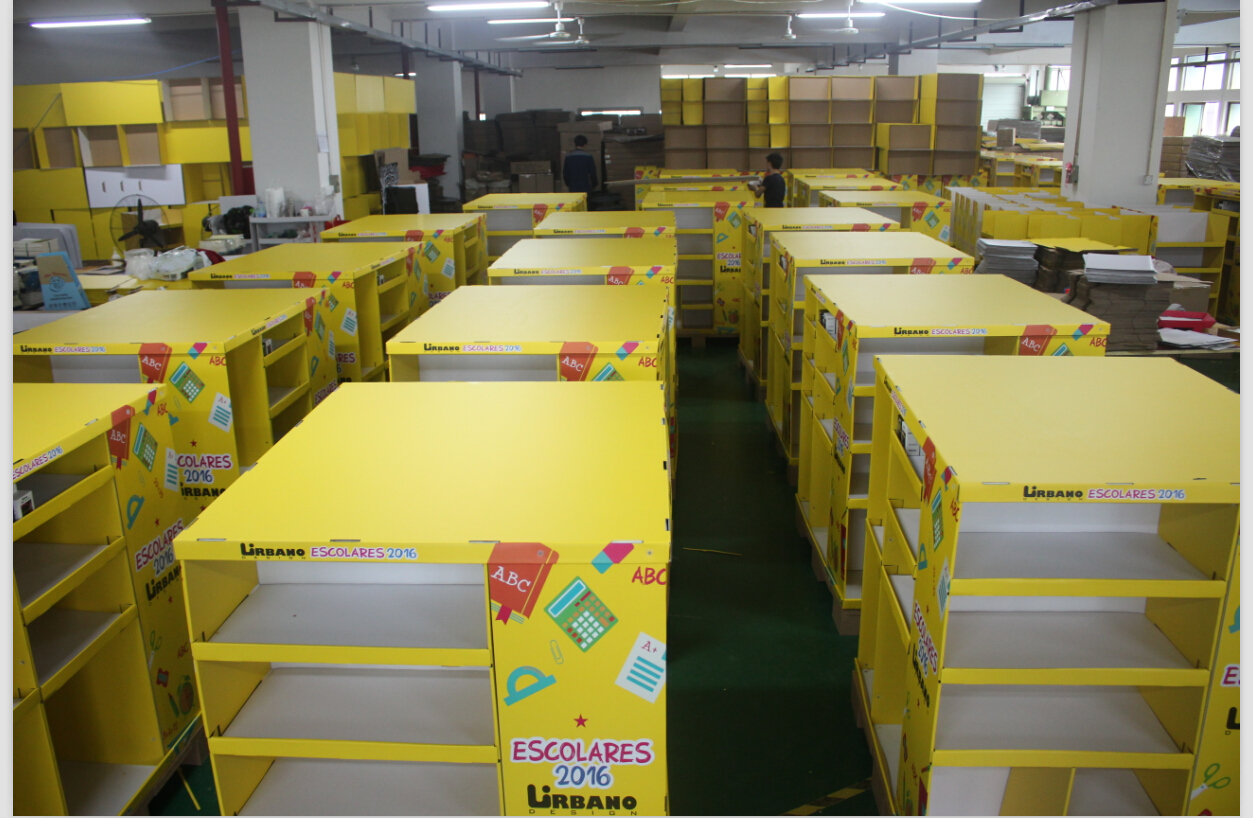
Many people think price is just about size, but it's much more than that. As a designer yourself, you know that the details make all the difference. Over my 16 years in this business, I've seen how small changes can have a big impact on the budget. A client once came to me with a very complex design. It looked amazing on screen, but the production cost was too high for their campaign. We worked together to simplify some internal structures that weren't visible to customers. This small change cut the cost by nearly 30% without affecting the display's look or strength. It's this kind of partnership that finds the sweet spot between vision and budget. Understanding the key cost drivers is the first step.
Factors That Influence Display Stand Pricing
| Factor | Impact on Price | My Insight |
|---|---|---|
| Size & Complexity | High | Larger and more intricate designs require more material and more labor to assemble. |
| Material Grade | Medium-High | Stronger, thicker cardboard (like B-flute or EB-flute) costs more but provides better durability. |
| Printing & Finishes | Medium-High | Full-color printing, lamination, or special finishes like UV coating add to the cost but also the visual appeal. |
| Order Quantity | High | The setup cost is the same for 10 or 1000 units. Larger quantities spread this cost out, making the per-unit price much lower. |
What are cardboard displays called?
You see them everywhere in stores, but what are they actually called? Using the right name helps you communicate clearly with a supplier and find exactly what you need for your product.
Cardboard displays are known by many names. The most common term is Point of Purchase (POP) displays1. You might also hear them called Point of Sale (POS) displays, temporary displays, or FSDUs (Free Standing Display Units). The name often describes where or how they are used.
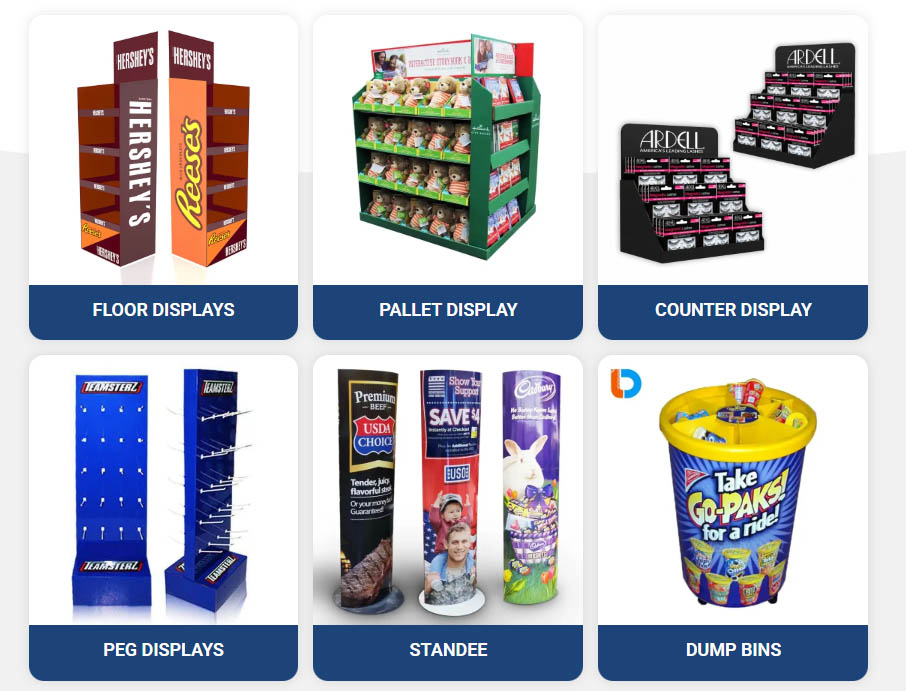
Knowing the industry terms is very helpful. It makes the conversation with your supplier much more efficient. When a designer like you can say, "I need a quote for 500 Counter Display Units (CDUs)2 for a new cosmetic line," I know exactly what you're imagining. It saves time and prevents confusion. We can then focus on the creative aspects instead of trying to figure out the basic format. It’s like having a shared language. It’s especially important when you’re trying to match a specific display style you’ve seen in another store. Knowing the name helps you search for examples and clearly explain your goals.
Common Types of Cardboard Displays
| Display Type | Common Name(s) | Best Use Case |
|---|---|---|
| Floor Display | FSDU (Free Standing Display Unit), Standee | Placing in aisles or open spaces to attract attention to a new product or promotion. |
| Counter Display | CDU (Counter Display Unit), Countertop Display | Holding smaller items right at the checkout counter to encourage impulse buys. |
| Pallet Display | Pallet Skirt, Full Pallet Display | Shipping products pre-loaded for quick setup in large retail stores like Costco or Walmart. |
| Dump Bin | Gravity Bin, Bincase | Holding loose, irregularly shaped, or discounted items that customers can easily rummage through. |
How to make a cardboard display stand up?
Your display looks great, but will it last in a busy store? A leaning or fallen display is worse than no display at all. The secret is in the structural design3, not just glue.
To make a cardboard display stand up securely, focus on its structure. Use a wide base for stability4, design strong internal supports5 like lattices or shelves, and choose the right cardboard grade. Ensuring the cardboard flutes run vertically also adds significant strength and prevents bending.
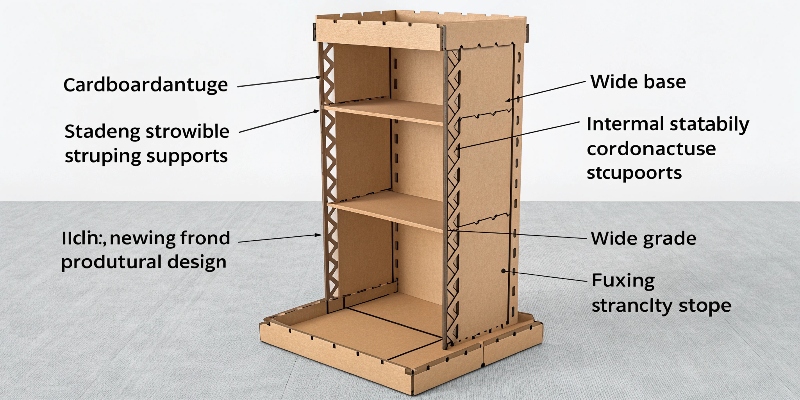
This is where experience really shows. Any new supplier can make a box, but making one that holds 50 pounds of product for six weeks is an art. I remember a project for a beverage company. Their display needed to hold dozens of heavy cans. The first prototype from another supplier failed within a day. They came to us, and we focused on the engineering. We designed an internal lattice structure using double-wall cardboard and made sure the main vertical supports had the corrugation running up and down, not side to side. It’s a small detail, but it makes all the difference. The final display was rock-solid, and the client was thrilled. It’s about thinking like an engineer, not just a designer.
Key Techniques for Structural Stability
| Structural Technique | Description | My Tip |
|---|---|---|
| Vertical Flutes | The corrugated lines inside the cardboard should run vertically. | This is the single most important rule for strength in vertical panels. It acts like columns holding up a building. |
| Internal Supports | Adding internal walls, shelves, or a honeycomb-like structure. | For heavy products, we create a load-bearing sub-structure. The outer printed shell is just for looks. |
| Wide Base/Footprint | Make the base of the display wider than the top. | A low center of gravity prevents tipping, especially in high-traffic areas where it might get bumped. |
| Locking Mechanisms | Using tabs and slots instead of just relying on glue. | Well-designed locks create a rigid frame that holds its shape and can even be disassembled and reused. |
What is the most expensive cardboard box?
Ever wonder what makes some packaging feel so premium? It's not just a box; it's an experience. But that premium feel often comes with a premium price tag tied to special features.
The most expensive cardboard "box" is typically a custom-designed rigid box6, often used for luxury goods like electronics or cosmetics. Its high cost comes from complex construction, premium materials, and special finishes7 like foil stamping, embossing, magnetic closures8, and custom inserts9.

While my main focus is on POP displays, we handle a lot of product packaging too. The principles are similar. The material and production process define the cost. The term "cardboard box" can mean a simple shipping carton or a high-end rigid box for an iPhone. The difference in price is huge. We often work with clients to find a balance. Maybe they want a premium feel without the full cost of a rigid box. In these cases, we might suggest using a high-quality litho-laminated e-flute box. It provides a beautiful printing surface and a sturdy feel at a fraction of the cost of a traditional rigid box6. It's about achieving the desired "unboxing experience10" within the project's budget.
Features That Increase Packaging Cost
| Expensive Feature | Why It Adds Cost | Is It Worth It? |
|---|---|---|
| Rigid Box Construction | They are made from thick paperboard wrapped in paper and are mostly hand-assembled. Labor-intensive. | For luxury products where the packaging is part of the brand experience? Absolutely. For everyday items? No. |
| Special Finishes | Foil stamping, embossing, spot UV, and soft-touch lamination require extra machine processes and setup. | These details make a product stand out on the shelf and feel more valuable. It can strongly influence a purchase decision. |
| Magnetic Closures | Requires embedding magnets into the box structure, which is a manual or semi-manual process. | The satisfying "snap" adds a premium touch that customers remember. Great for gift sets and high-end electronics. |
| Custom Inserts | Foam, pulp, or thermoformed plastic inserts are custom-molded to fit the product perfectly. | Essential for protecting fragile, high-value items. It also improves the presentation and perceived value. |
Conclusion
Choosing the right supplier is about finding a partner. Look at their experience, design skills, and how they communicate. A great partner helps make your products a success in stores.
-
Explore this link to understand how POP displays can enhance retail marketing and boost sales. ↩
-
Learn about CDUs and how they can effectively encourage impulse buys at checkout. ↩
-
Discover the importance of structural design in creating durable and effective cardboard displays. ↩
-
Understand how a wide base contributes to the stability and longevity of displays in busy retail environments. ↩
-
Find out how internal supports enhance the strength and stability of cardboard displays. ↩
-
Learn about rigid boxes and their role in creating a premium packaging experience for luxury products. ↩ ↩
-
Discover how special finishes like foil stamping can elevate product packaging and attract customers. ↩
-
Find out how magnetic closures enhance the user experience and add a premium touch to packaging. ↩
-
Learn about the role of custom inserts in protecting products and improving presentation. ↩
-
Explore how the unboxing experience can influence customer satisfaction and brand perception. ↩


